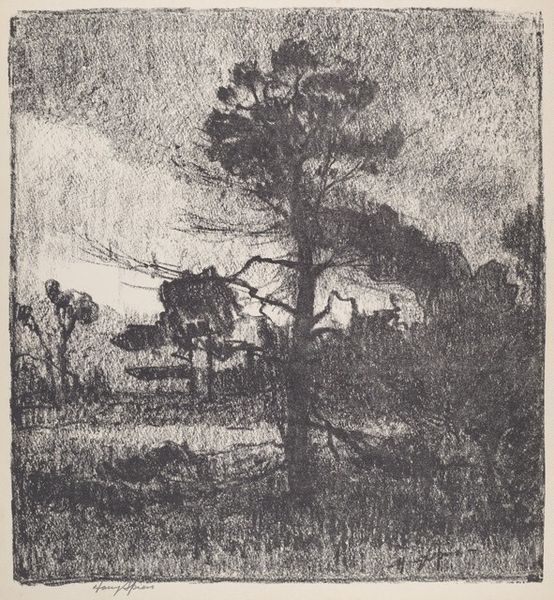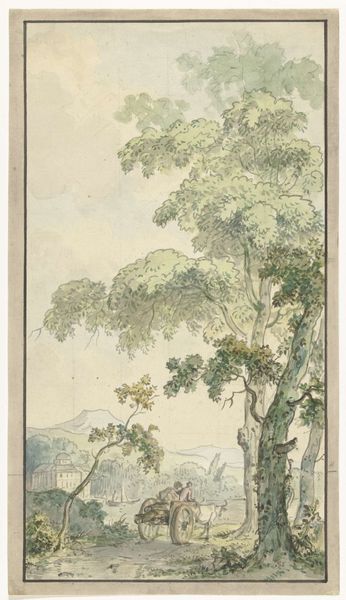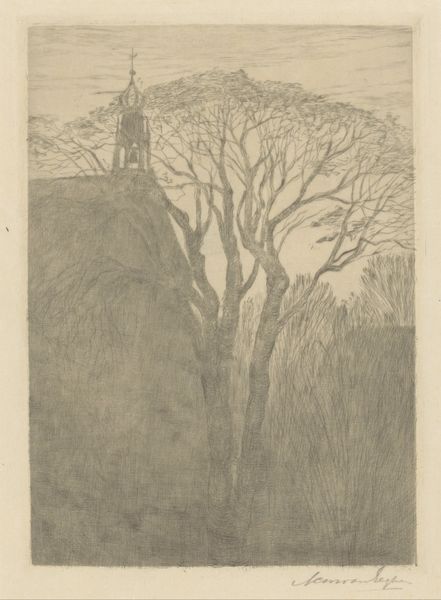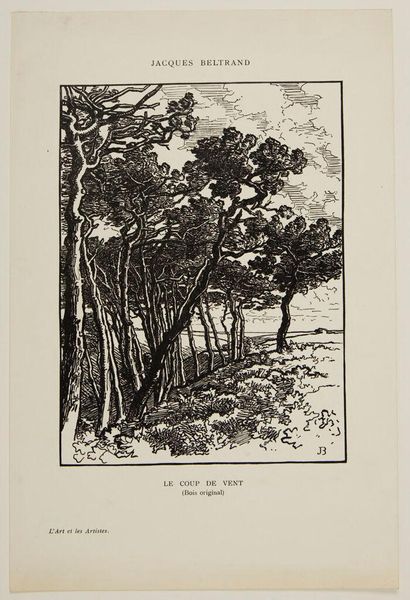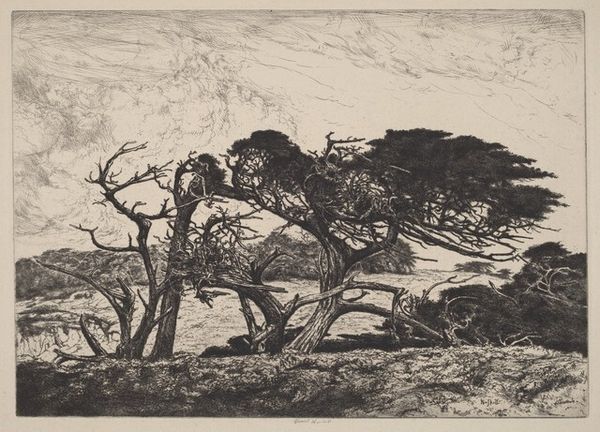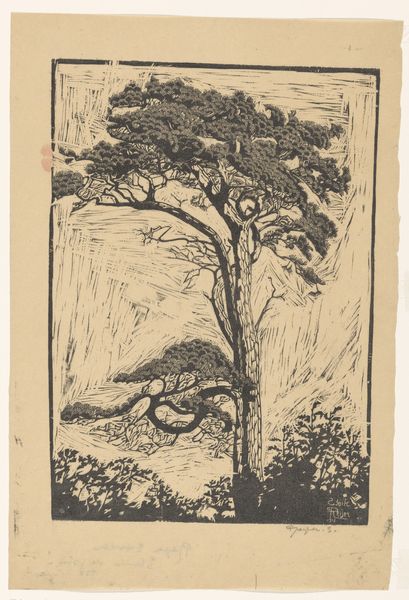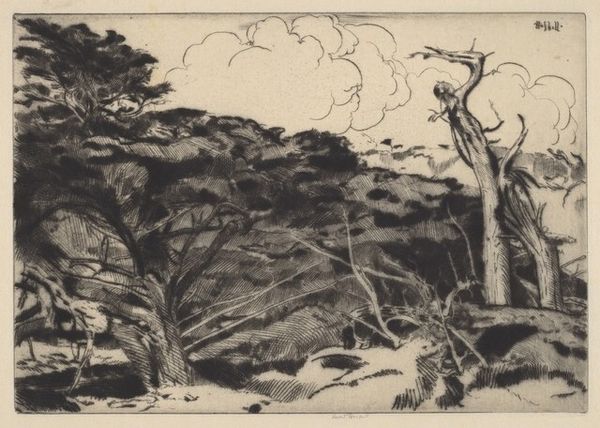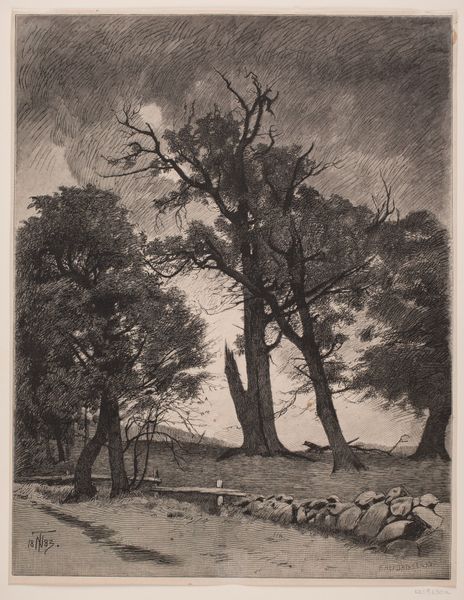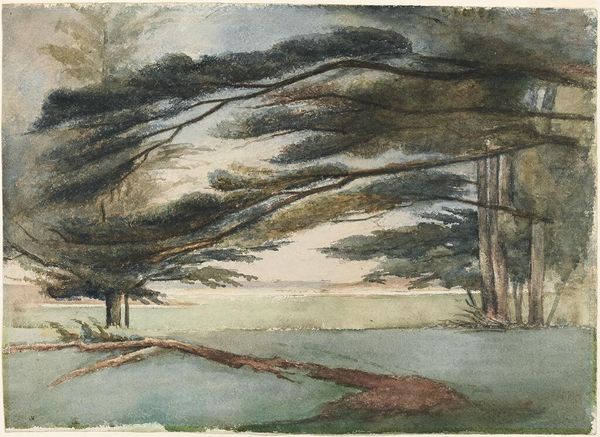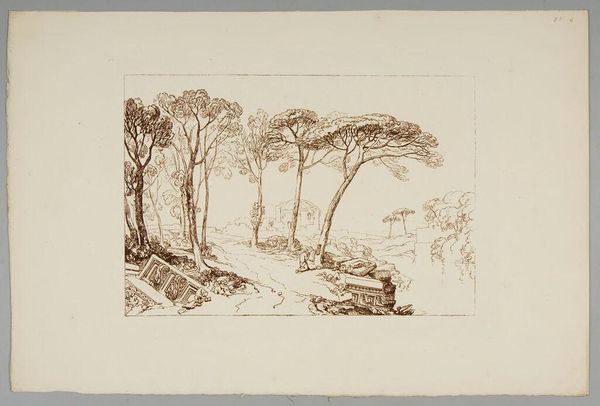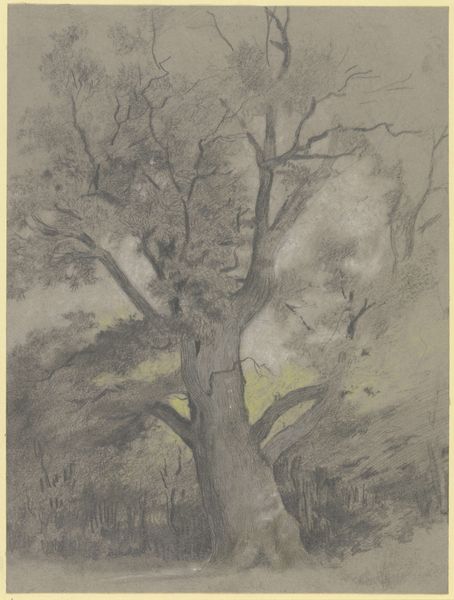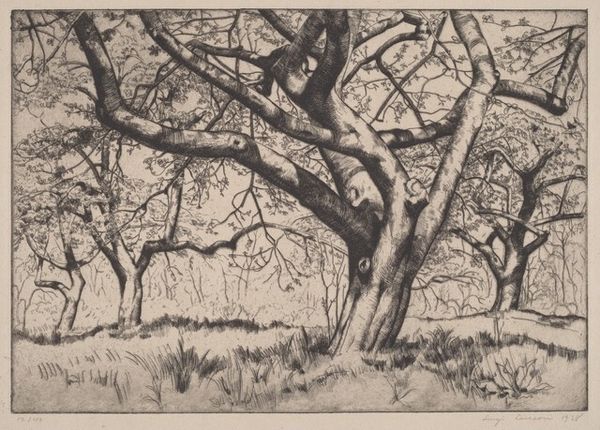
#
landscape illustration sketch
#
toned paper
#
ink painting
#
landscape
#
handmade artwork painting
#
fluid art
#
naive art
#
watercolour bleed
#
watercolour illustration
#
mixed medium
#
watercolor
Copyright: Public Domain: Artvee
Curator: Helen Hyde created "Mount Orizaba" in 1912, a work showcasing her distinctive woodblock print style. What stands out to you initially? Editor: Immediately, I'm struck by the composition – those swooping tree branches framing the distant mountain. There's a sense of depth created by the layered effect. It also possesses an intimate scale. Curator: The artist's experience as an American woman working in Japan during the Meiji era shaped her embrace of Ukiyo-e techniques. The subject matter—a Mexican peak seen through a Japanese lens, if you will—highlights this global exchange. Editor: It is precisely in the trees that I sense Japanese pictorial codes but notice how she uniquely employs a Western pictorial strategy using those large sweeping branches as an aperture to the center subject, creating that sensation of depth. Curator: Indeed, consider Hyde's unique perspective. At a time when travel for women was heavily policed and gender norms were fairly entrenched, she travelled and made her mark on this scene. Her presence impacted this pictorial depiction as a cultural and political undertaking. Editor: I am interested in her choice of a muted color palette. The soft, earthy tones lend the work a contemplative, almost melancholic quality. There is tonal harmony that suggests this. The composition is strong, of course, but also softened, lending that contemplative quality. Curator: That subtlety mirrors the larger social and political context of early 20th-century Orientalism and the position that women were granted in it. Editor: Perhaps. And these softer hues contribute to an atmospheric effect, giving an impression of the mountain as something both majestic and remote. Overall it’s her deployment of traditional and nontraditional methods of image-making that provide this artwork its specific affect. Curator: Hyde offers us insight into her intersectional experiences that expand access to cultural artistic movements, highlighting key considerations in the socio-political implications within the scope of gender studies in art history. Editor: It really underscores how technical and formal elements in her artistic expression were employed.
Comments
No comments
Be the first to comment and join the conversation on the ultimate creative platform.
